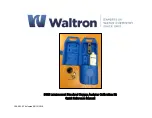
4
TC-BA-e-1712
Resolution: 0.1 µm (0 to 99.9 µm)
1 µm (over 100 µm)
Accuracy:
- Standard: 3% of the measured value or ± 2.5 µm or 0.1mil
This is valid within a tolerance range of ± 100
μm around the individually measured
range, if a two-point calibration was performed within this tolerance range.
--
Off-Set Accur:
1 % of the measured value or Min ± 1.0 µm
This is valid within ± 50
μm around the
Off-Set Accur
point.
PC- interface: with RS-232C interface
Power supply: 4x 1.5V AAA (UM-4) battery
Operating conditions: Temperature: 0 to 50°C
Humidity: less than 80%
Dimensions: 127 x 67 x 28mm (5.0 x 2.6 x 1.1Inch)
Weight: about 81g (batteries not included)
Scope of delivery: - Carrying case
- Instruction manual
According to types: 1. Incorporated sensor at F model:
TC 1250-0.1 F, with button F/N
2. Incorporated sensor at N model:
TC 1250-0.1 N, with button F/N
3. Incorporated sensor at FN model:
TC 1250-0.1 FN, without button F/N u. S/C
- Adjustment foils, at every model
- Zeroing plate (Aluminum) at N model
- Zeroing plate (iron) at F model
- 2 Zeroing plates (Aluminum and iron) at FN combination model
Optional accessory: Cable & software for RS-232C: ATC-01


























